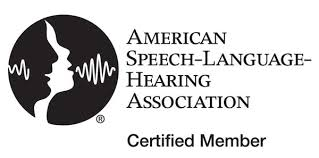9 Engaging Ways to use Stories in Speech Therapy
When using stories in speech therapy the possibilities are endless! Use these 9 engaging therapy activities to incorporate stories into your next session.
They are a natural way to help students practice articulation which will simultaneously help them build or strengthen their language skills.
1. Make Flashcards for Memory/Go Fish
Read the story aloud and identify all of the target words.
Have the students make their own set of flashcards with a picture or word to represent every target word.
Then use two sets to play memory.
You can add a homemade “Old Maid” flashcard in too.
Or use multiple sets of cards (like if you have 4 students) put them all in the deck and play Go Fish to collect all four matching target cards.
2. Make Your Own Book
Read the story.
Find and practice target words.
Determine how many pages you want the book to be and fold them in half and staple down the side to make a homemade bound book for each student.
Have the students write the story on the pages including every target word.
Read it to each other.
Have them take the book home and read to their family and get signatures of people who listened.
Bring back for a reward.
3. Illustrate the Story
Read the story and have the students illustrate the story.
This can be done with one picture to represent the story or can be done in several boxes like a comic strip or storyboard or it can be done in multiple illustrated pages.
Just make sure the students are including the target words in the picture.
4. Hidden Pictures Illustration
Read the story and discover and practice the target words.
Give the students a time limit to draw a picture and hide at least 10 or more of the target words in the picture like typical hidden picture illustrations.
Have the students say and write the “Key” of target words to find at the bottom.
Then have the students trade pictures and see if they can find each other’s hidden targets.
This could be made easier and faster by giving the students a completed black and white hand drawn picture scene and asking the students to hide their pictures in it with a black pen or dark pencil.
Then make a copy at a copy machine before swapping pictures to make the hidden pictures blend in.
5. Following Directions
Read the story.
Find and practice all the target words.
List them, make your own cards, or collect them (from the ALL in One Printable Flashcards).
Determine what level of direction following you want to work on.
Then use the flashcards as props for following directions.
Direct the students not to begin until you have finished giving the directions.
For example, if the flashcards were bear, book, and bib, and you wanted to work on 3-step directions, you would say, “Pick up the bear, put the book on the ground, and give the bib to me.”
See how the students do.
Practice and scaffold at their level.
If students are able, you can let them make up their own directions using the flashcards as targets.
Maybe begin with one step directions.
SEE ALSO: The Best Free App for Speech Therapy
6. Underline and Word Search
Make everyone a copy of the story or put it in a sheet protector or laminate it so it's reusable.
Read the story together.
Underline and practice saying all the target words.
Then make a word search on the back by drawing a large square.
Have the students pick 10 of the target words and write them up and down, sideways, or diagonal in the square.
Then have them write random letters all around them in rows and columns to completely fill in the square.
When it's ready, have the students switch with someone and see if they can find their hidden target words.
7. Hide N’ Seek
Read the story and find and practice all the target words.
List them, make your own cards, or collect them (from the ALL in One Printable Flashcards).
Either hide the pictures around the room before the session, or have them close their eyes while you hide the words quickly.
Then let the students go find the cards as quickly as they can.
Then they must come back and practice them and say them to you a number of times.
When everyone has completed their cards, pick a new student to hide them and play begins again!
Version 2 - Play with the lights off and with flashlights to find the pictures.
8. Voice Changer
Read the story.
Find and practice all the target words.
You may want to make or use flashcards to help with retell if the students can’t read.
Then take turns reading or retelling the story with a different voice, but still using great articulation.
Some examples of voices are:
- high
- low
- squeaky
- baby
- growl
- cowboy
- witch
- fairy
- leprechaun (Irish accent)
- British accent
- Southern accent
- surfer
- Barbie
- hiccups
- under water
- out of breath
- pirate
- duck
- cow
- cat
- etc.
9. Socialize It
Read the story aloud.
Find all the social skills as well as target words in the story.
Discuss what social skills were correct and what would have happened if they hadn’t used great social skills like eye contact, body language, turn taking, listening, expressing wants/needs, topic maintenance, etc.
Then have the students read the story and use the dialogue or make up dialogue to go with it while they practice the appropriate social skills.

About the Author
Hollie is an M.S. CCC-SLP and multi-tasking mom of 4 from Florida. She received both her B.S. and M.S. from Utah State University. She loves being an SLP and helping SLPs deliver multi-modal therapy treatment that maximize progress.
Return to top of 9 Engaging Ways to Use Stories in Speech Therapy
Special Deals and Activities, Oh My!
Sign up for Terrific Therapy Emails
Your information is 100% private & never shared.




























